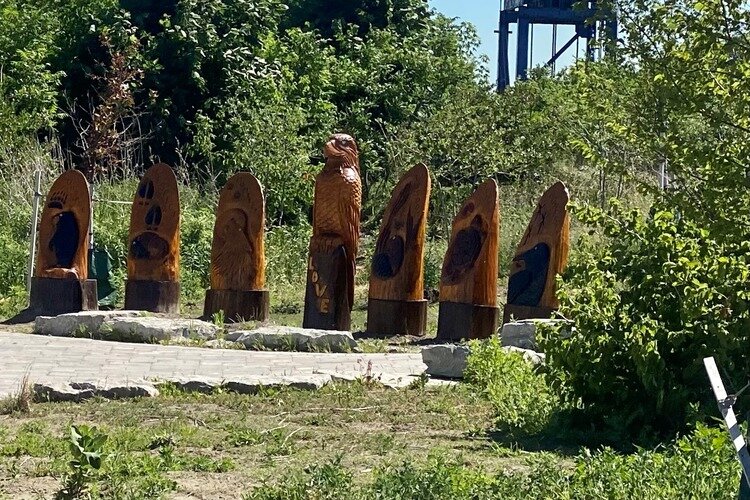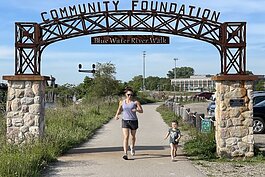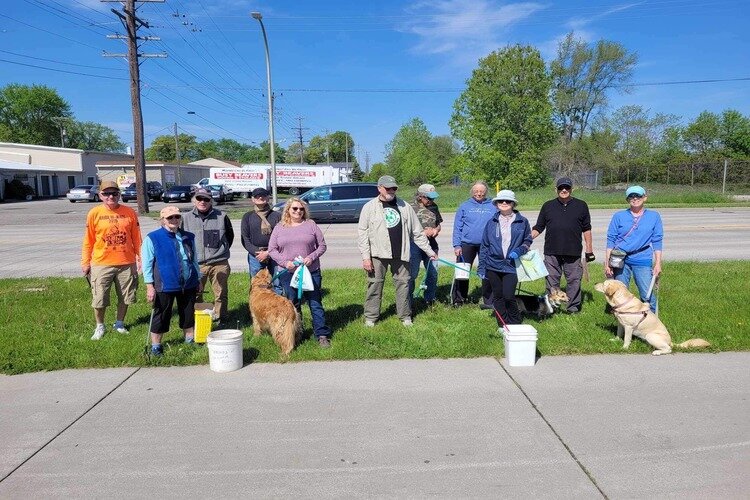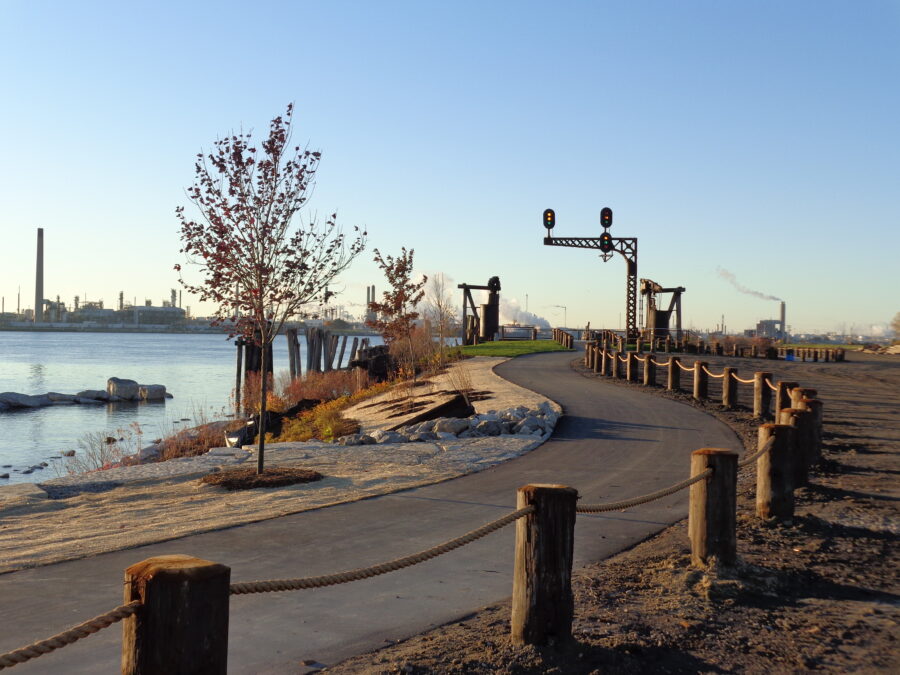Partner Content – The Keel, Port Huron
JOSEPH HAYES | THURSDAY, JUNE 6, 2024
The blue pristine water. The delightful view of the Blue Water Bridge. For the past decade, the Blue Water River Walk has added another dimension to what attracts people to the Blue Water Area.
As the Blue Water River Walk celebrates its 10-year anniversary this month, it’s clear how important it has become to Port Huron. Around 4,300 feet of the St. Clair River shoreline was restored and rehabilitated in 2013 through the funding of the Great Lakes Restoration Initiative. In 2014, the shallow water habitat restoration was completed. Nearly 7,000 tons of debris was removed to give Port Huron a rehabilitated shoreline and River Walk.

“The transformation is incredible,” says Friends of the St. Clair River Executive Director Sheri Faust. “I remember it as a forbidden, neglected place. I’m so glad my daughters won’t know that history. They’ll only know it as an inviting destination to explore nature and connect to the Great Lakes. I’m sure most people remember its history of train yards, shipping, and warehouses. With the removal of tons of debris and contamination, the River Walk has become a tourist destination and an opportunity for economic development.”
“Studies show that environmental restoration produces economic benefits,” Faust adds. “The restoration that has occurred at the River Walk is allowing the riverfront to heal. Ten years is just a drop in the timeline bucket compared to the century of industrial use, but the evolution from wasteland to thriving space has been exciting to watch unfold.”
The Blue Water River Walk is just less than a mile downriver from the Blue Water Bridge. The River Walk runs for nearly a mile along the St. Clair River, beginning just south of the mouth of the Black River and running down to the Seaway Terminal.
Some of the main features of the River Walk include a railroad ferry observation dock that dates back to the early 1900s. An outdoor classroom is at the north end of the trail, near the observation dock. Public art along the trail has added to its grandeur and a fishing pier at the southern end of the River Walk.

The pedestrian walkway has drawn people to exercise while taking in the sights and sounds of the River Walk. The project was initially spearheaded by the Community Foundation of St. Clair County, which was given the land by local philanthropists James and Suzanne Acheson in 2011. In return for the investment, the Community Foundation promised to find the necessary funding for the restoration and rehabilitation of the shoreline. Ten years later, that promise has been kept, much to the delight of the entire Blue Water Area.

“Thousands of residents and visitors per year are able to access the waterfront for walking, biking, jogging, and an opportunity to just sit and enjoy the river,” says Jackie Hanton, vice president of the Community Foundation of St. Clair County. “Before, when it was industrial/railroad property, the community was not able to access it for recreation or enjoyment. From the riverside, if you’re boating, the restored shoreline is also visually beautiful to see and welcoming for our community.”
Hanton says that using partial funding from the Michigan Department of Transportation Enhancement Grant Program, the Community Foundation raised matching private donations that led to the 10-foot wide asphalt pedestrian trail along the entire length of the shoreline.
“The Blue Water River Walk was an example of ‘If you build it, they will come’,” Faust noted. “Before the project was even completed, people were visiting, swimming, and wildlife, like birds, reptiles, and amphibians, had returned to the area they once called home.
Today this riverfront is cleaner and greener, Faust says. It’s an inviting destination to seek adventure, moments of solitude, or motivation for health. This healthy riverfront makes the community a more attractive place to live and work. The River Walk is also great for wildlife and bird-watching, especially in the winter. Native plants are critical to this habitat restoration project because they produce the most suitable habitat for native fish and wildlife.
For the past eight years, the St. Clair County Trailblazers made up of local outdoor enthusiasts, have committed to help keep the Blue Water River Walk clean. Each week the group has met to pick up trash.

“I would go down there and see cigarette butts,” says Mike Edmondson, a retired mail carrier, who has been a member of the group from the beginning. “That kind of led our group to do a weekly clean-up. Every Monday the last eight years we meet and go down there to pick up trash. Everyone has to do their part to keep it clean.”

Kirsten Lyons, a Naturalist-Invasive Species Specialist with St. Clair County Parks and Recreation works alongside the Trailblazers. Lyons says the improvement of the waterfront can be felt all around the Blue Water Area.
“I think it’s a million-dollar view,” Lyons says. “I think it’s a jewel in the community. When we go down there, there are always people walking their dogs or riding bikes. The view is priceless.”
The Blue Water River Walk has become a key component of the Bridge to Bay Trail, which is planned to connect the shoreline from Lakeport State Park to Anchor Bay. St. Clair County Parks and Recreation plans to develop a wetland at the trail’s south end.
“I’m most proud of the transformation from basically a brownfield to a beautiful walking path with wetlands and a county park nestled in the middle,” says St. Clair County Parks and Recreation Director Dennis Delor.
“It creates access for users and also helps filter rain water that goes through the system before reaching the St. Clair River,” Delor says. “It has a very unique purpose with regional and statewide significance.”

